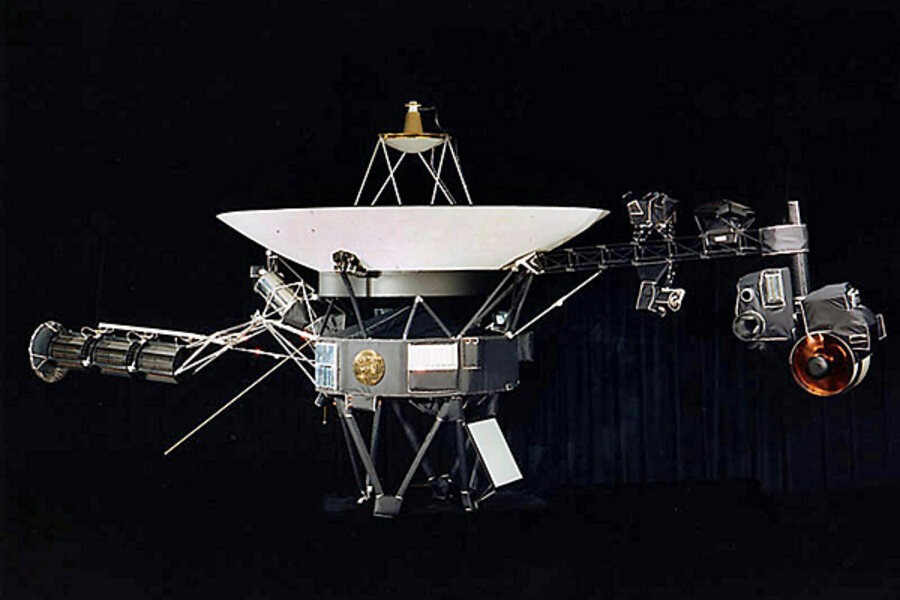Voyager 1 spacecraft entering 'heliopause,' leaving solar wind behind
Loading...
Voyager 1 is about to kiss the solar system goodbye.
The plucky spacecraft – one of two Voyagers launched more than 30 years ago and now bound for interstellar space – appears to have reached a region within a broad boundary between the sun's influence and interstellar space where the speed of the solar wind's outflow reaches zero, scientists report.
The region is known as the heliopause, where the solar wind – a continuous flow of charged particles that streams from the sun in all directions at roughly 1 million miles per hour – is brought to a standstill as it meets interstellar winds head-on and gets deflected sideways.
Space photos of the day: Voyager
"The solar wind has turned the corner," said Ed Stone, the mission's project scientist, in a statement. The Voyager team presented its evidence at the fall meeting of the American Geophysical Union, currently under way in San Francisco.
The boundary between the sun's influence, known as the heliosphere, and interstellar space is thought to consist of four onion-like layers: the termination shock, where the solar wind grows increasingly turbulent as the sun plows through interstellar space; the heliosheath, where the wind grows turbulent and get compressed and heated; the heliopause, Voyager 1's current location, and the bow shock, the outermost region where the solar system in essence generates a wake in the tenuous gas and dust between stars.
Voyager 1 passed through the termination shock and into the heliosheath in December 2004. The craft passed into the heliopause last June, at a distance of some 10.6 billion miles from the sun. It's currently traveling at 38,000 m.p.h.
How much time remains before Voyager 1 enters interstellar space?
A research team led by University of Arizona physicist Ke Chiang Hseih has analyzed data from Voyagers 1 and 2, as well as from spacecraft closer, to suggest that the heliopause at Voyager 1's location is only about 21 astronomical units wide (give or take 6 A.U.), or roughly 21 times the distance between the Earth and sun.
The team acknowledges that its estimate represents a "very coarse cut" at taking the measure of "a very dynamic region." But if it's correct, Voyager could take as few as four years to clear the heliopause and enter the bow shock.
The estimate was published in August in Astrophysical Journal Letters.
The latest data from Voyager 1 should help refine those estimates, researchers say.





